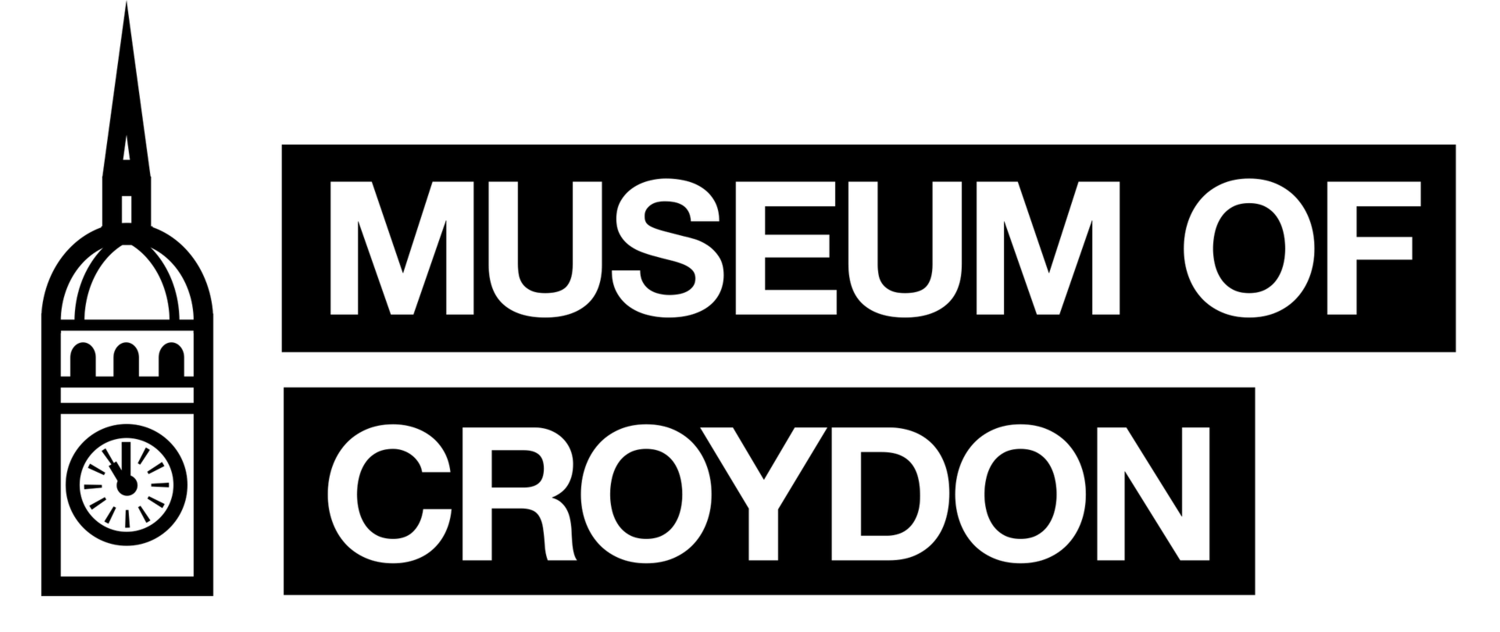
A Croydon Art Adventure
Croydon Art Activity Pack
Artistic Anglo-Saxons
Anglo-Saxons are known for their detailed and decorated metalwork such as brooches, helmets, buckles and jewellery. Worn mostly by wealthier members of a community, these intricately designed pieces with their swirling patterns usually had special meanings.
Through shapes and lines, the Anglo-Saxons would incorporate animals, faces and symbols in their art and design to tell stories. They also believed that different signs and symbols represented different things and so would carve them on certain objects to protect or empower the wearer. For example, boars often feature on pieces of Anglo-Saxon weaponry and armour as they believed that these animals would make the wearer strong and fierce.
Activities
Find what’s hidden in the art of an Anglo Saxon brooch and complete their long lost design!
Be inspired by the patterns of the past and redesign an Anglo-Saxon object’s design.
Did you know?
Anglo-Saxon cemeteries have often contained burial goods; from jewellery and dress ornaments, weaponry, to vessels! These finds have helped archaeologists to create a timeline, by looking at the art style, form and decoration. An object, however, may be older than the date the person was buried.
Decoration on metal objects, especially brooches, have given a great indication of the date of creation and use. This way of linking time with popular art styles is often debated, for example, a date could be based on the absence or presence of a design feature, which may have not been in the makers mind.
Source: ‘The Anglo-Saxon Way of Death’, by Sam Lucy (2000)
Can I take your portrait?
A portrait is an artistic representation of a person – it can be a painting, drawing, photograph or even a sculpture. Sometimes the artist will try and create an exact likeness of the person, other times, artists use symbols, shapes and other objects to represent the personality or mood of the person.
A self-portrait is where the artist creates a portrait of themselves. These can be particularly interesting as artists can use self-portraits to keep a record of how they age or can use them to reveal different parts of their personality.
Portraits and self-portraits can be very official – for example, a portrait of the royal family or a politician. They can also be very casual – a selfie taken on your phone is a self-portrait!
Activities
Be inspired by Croydon’s art collection and create your OWN self-portrait!
Challenge yourself to re-create one of our favourite artworks - Dress up, Pose & get in Character!
Did you know?
Artists have been creating portraits since Ancient Egypt! Portraits of family members and loved ones were featured on the walls in tombs and monuments. Portraits are a fantastic way to remember a person or a moment in time.
The Museum of Croydon’s art collection features over 35 portraits on the Art UK site, click here to look for your favourite portrait hidden amongst the landscapes.
Croydon on Canvas
Croydon and the surrounding areas have been the subject of the work of many artists. The Museum of Croydon have pieces from the early 1800s to modern day showing what the town looked like in the past and how it looks in the present.
Different artists have focused on different parts of Croydon – some the rolling hills in Addiscombe, others the high street and buildings in the city centre. Even the trams have been captured on canvas!
Activities
Have a go at finding where in Croydon these artworks are based! Have a guess, take a stroll or pick your favourite spot.
Scene In Croydon have sketched some of their favourite landmarks in Croydon for you to colour in. Share with us your artworks and check out entries from a past competition!
Did you know?
Scene in Croydon was first created by Croydon designers Samantha Warren and Danni Livett in November 2019. They design artworks inspired by Croydon’s architecture, culture and community. You can even have your very own Croydon artwork at home, explore their online shop here.
Read more about Scene in Croydon in the Croydonist’s article ‘An Expanding Art Scene’.
Painting by Nature
It’s no surprise that many artists look to nature for inspiration. With so many beautiful colours, interesting shapes and different textures to explore, the natural world is almost a work of art itself. Many plants, including flowers, can be used to naturally dye fabrics, yarn and even create paint!
In the Museum of Croydon collection, flowers bloom in many of our objects. From still life paintings depicting vases of tulips, to a stunning Chinese porcelain tea pot in the Riesco collection - colourful petals and leaves can be seen in many places. This tea pot was made between 1662 and 1722, during the reign of Emperor Kangxi, of the Qing dynasty. Flowers can be found on the tea pot’s handle, sides, lid and even the spout!
Activities
Grab your colouring pencils, crayons or paints! Colour in our teapot or design your very own floral teapot!
Gather leaves, petals and twigs to make your own 3D natural artwork in this hands-on activity.
Did you know?
During the 2020 Covid-19 lockdown, members of a Croydon neighbourhood grew sunflowers as a symbol of happiness and unity. Learn more about this in the virtual exhibition, My Home is My Island.
There is a long history of flowers in Croydon, from its name possibly originating from the Anglo-Saxon ‘Croh denu’ which meant ‘crocus valley’ to lavender fields in Mitcham which were used to produce essential oils.
Learn more about essential oils in our 'Jakson's Essential Oils' blog.
We hope you have enjoyed our family learning pack on ‘A Croydon Art Adventure’. You can find the answers to the activities here.
We welcome any feedback you have for our brand new digital learning offer! Let us know what you enjoy and tell us of any accessibility needs, ideas or concerns you have by emailing us at museum@croydon.gov.uk




